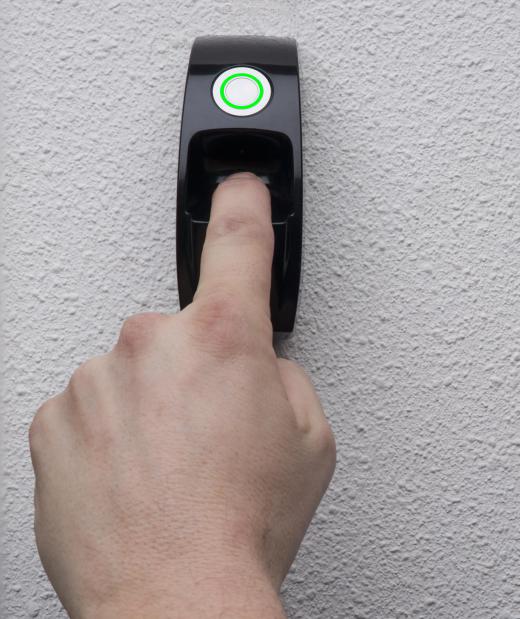What is Biometric Identification?
Biometric identification is the process by which a person can be identified by his characteristics. To do this, data about the defining characteristic, for example the points where the ridges of a fingerprint split or end, is usually enrolled and stored in a database. Then, when the person wishes to be identified, the characteristic is scanned so that the computer can compare it to the data already stored in the database. Using biometric identification is a more secure method of identifying a person because the characteristic in question is a part of that person. This means that it cannot be easily shared, traded, or stolen by another.
There are mainly two categories of biometrics identification: physiological characteristics and behavioral characteristics. Physiological biometrics has to do with the physical traits of a person, and behavioral biometrics has to do with the things that can change with the environment. For example, a fingerprint, a physiological characteristic, does not usually change except for accident or illness, but a signature, a behavioral characteristic, can change as a person ages. Examples of physiological biometrics include fingerprinting, retinal scans and handprint scans. Behavioral biometrics includes verifying signatures and voice recognition.

Fingerprinting is possibly the best known form of biometric identification. It is used in the police department to identify suspects, as well as being used as login information on computers. To use fingerprints to identify a person, the person’s print must first be in the database. If not, a match can not be returned. A method commonly used in fingerprint biometrics is matching a person’s minutia points, the parts of a fingerprint where ridges end or split.

A device can also use a person’s eyes for biometric identification. This is called a retinal scan. A retinal scan uses the unique patterns caused by blood vessels in the eye to run a match. Another method that uses the eye for a biometric match is iris scanning. In iris scanning, it is a picture of the eye that is taken, which can then be quickly compared to a previous picture taken and stored in the database.

In addition to physiological data, biometric identification can also be done via behavioral methods. When enrolled, a behavioral characteristic, such as a voice, is captured and stored in the device. The voice can then be matched when the person speaks into the device again. Some children’s toys—such as young girls' diaries—use this technology. The drawback to this type of identification is that behavioral characteristics can change over the course of a day and may result in a person having a cold being locked out of their secure devices if they use voice recognition technology.
AS FEATURED ON:
AS FEATURED ON:













Discussion Comments
I don't mean to sound too paranoid, but there's something about biometric identification that bothers me. If a hacker or a thief really wanted to use a biometric identification system for access to a secure building, he would just need an appropriate body part. If an employee didn't want to cooperate, the intruder could just remove a finger or an eye and still defeat the biometric device. I'm not willing to give up a hand or an eye for my company, and I doubt many other people would be, either.
I think that future biometric identification devices should be able to scan for something that cannot be removed by force or duplicated. I don't know what it might be, but maybe something internal that can be scanned through a person's clothes and skin.
My office already does some biometric identification, but it's not very high tech. I have to place my hand on a special pad whenever I clock in or out. I don't think it's really able to scan our fingerprints or anything, but it does prove that a live person was at that time clock when a clock-in or clock-out was punched.
My cousin, however, works at a government facility as a civilian employee, and they have a much more elaborate biometric identification system for access. He has to put his index finger into a fingerprint scanner, then look inside a retina reader before he can even get inside his part of the building. The government does take its biometric security seriously.
Post your comments